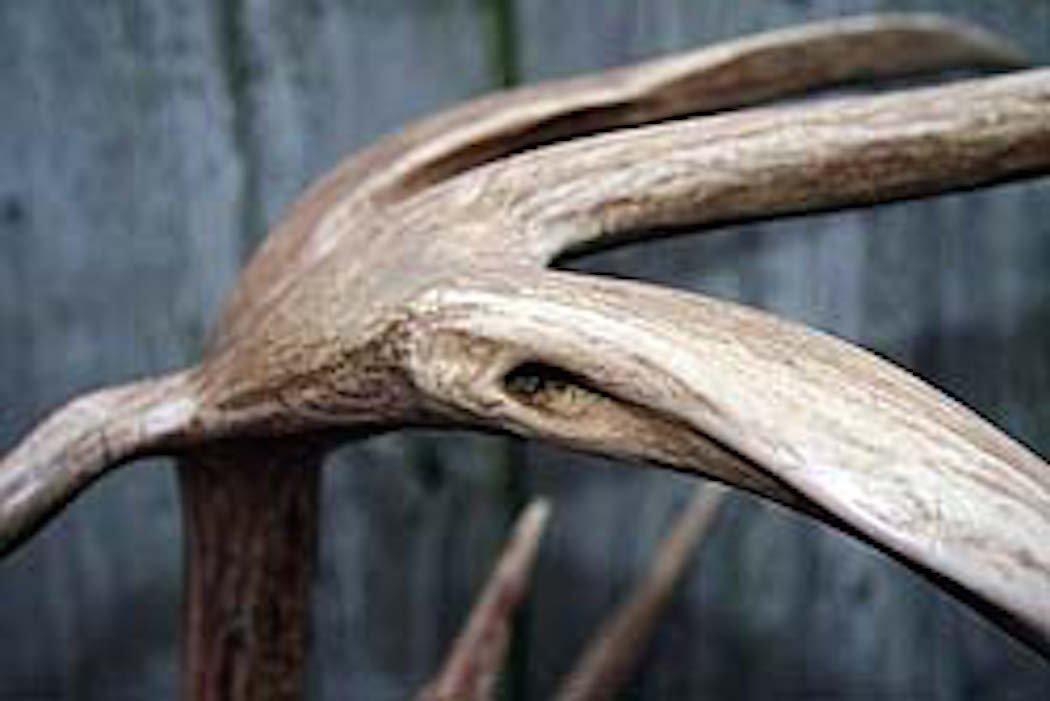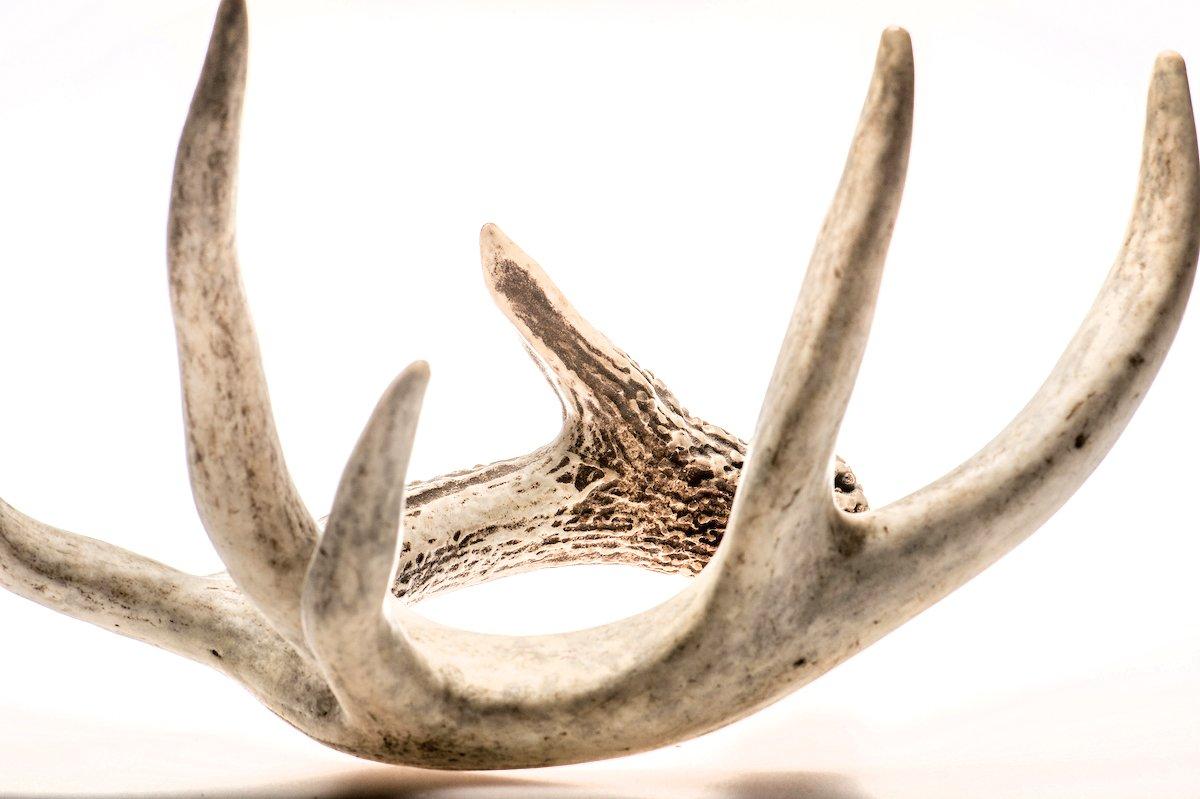Are You a Deer Antler Guru?
Deer hunters love antlers. While antlers aren't the primary reason most hunters pursue whitetails, it is the odd hunter who doesn't enjoy seeing them. Here are some answers to common questions about antlers.
I had a gentleman approach me at a recent seminar and tell me he read that medical scientists were interested in antler development. Unless they were hunters, why would they be interested in antlers? I am also commonly asked why some antlers are lightly colored while others are much darker. Is it due to the habitat where the deer live or are there other factors involved? Finally, I am routinely asked what causes the burrowed holes you occasionally see in antlers. I have heard many hunters speculate they are caused by some species of fly that bores into the antler while a buck is in velvet. This sounds logical, but is it true?
Let's look at some basic facts about antlers first and then discuss these questions.
Deer antlers can grow an inch or more per day, making them the fastest normal growing tissue known to man - only tumors and embryos grow new tissue at this rate. The antler growth cycle is driven by photoperiod (day length) and hormones. In photoperiod-controlled experiments, deer can grow up to three sets of antlers per year or retain their antlers for more than one year.
The pedicle area of the skull contains unique material that enables antler growth. Damage to the pedicle results in abnormal antler growth and, interestingly enough, transplanting material from a pedicle to other skeletal regions results in growth of antler tissue in the transplanted area.
Don't Miss: Realtree Antler Calculator
Gear Review: Yamaha Wolverine X2 Side-by-Side in Realtree EDGE
Scientists have transplanted material from a pedicle onto the foreheads of mice and caused them to grow antler-like projections. They have also transplanted this material onto the tibia (lower leg bone) of deer and caused them to grow an antler from their leg. I have observed bucks with a third antler arising from their forehead or face that clearly originated separately from their other antlers. Though the buck may have been born with this extra pedicle material, injury to the pedicle or adjacent skull region is more likely the cause.
The annual growth and shedding of antlers is regulated by annual cycles in testosterone levels, and any interruption can potentially impact the antler cycle. For example, if the production of testosterone in an adult buck in velvet is interrupted, his antlers will continue to grow, but they'll never harden. If the interruption occurs when the buck has hard antlers, he will shed them, but he'll grow new antlers the following spring that will never harden.
This can be observed in free-ranging bucks that injure one or both of their testicles, interrupting or diminishing the testosterone cycle. This is a common cause of the cactus bucks that a few hunters harvest each year. A small percentage of does grow antlers each year, too. These does have enough testosterone to grow antlers but generally not enough to harden them, so they usually remain in velvet.
When antlers are growing, the mineral requirements to fuel this growth exceed those for skeletal growth and maintenance — in some deer species it is three times higher. Diet provides the greatest amount of calcium and phosphorus for antler growth and mineralization, but the remainder is supplied by resorption, or stealing minerals from the skeleton and transferring them to the antlers. Ribs and shoulder blades contribute the most, and they may lose up to 40 percent of their calcium content while the antlers are hardening. This loss of minerals causes their ribs and shoulders to become porous and weak. However, by September, bucks can fully replace the minerals borrowed from their skeleton. Research has shown deer are constantly undergoing skeletal rebuilding. This is one possible reason why bucks are attracted to natural and man-made mineral licks during and immediately after the antler-growing period.

Don't Miss: 5 Reasons Bucks Have Antler Growth Deformities
Bucks shed antlers during winter by absorbing the bone material at the base of the antler. The degeneration of this tissue between the pedicle and antler is considered the quickest deterioration of living tissue known to man.
So, why are medical scientists interested in antlers? Since antlers are the fastest-growing normal tissue and their shedding from the pedicle is the fastest deterioration of living tissue, medical researchers are interested because they hope to learn how cancer cells grow so quickly by studying antlers — rapidly growing antlers mimic certain bone cancers.
Dr. George Bubenik, professor of zoology at Guelph University in Ontario, is a noted expert in antler growth. Some of his research has focused on how scientists can use embryonic stem cells that induce antler growth to treat human ailments. Embryonic stem cells allow for the re-growth of antlers each year by differentiating into skin, blood vessels, cartilage and bone.
Deer antlers are strikingly similar to human limbs, consisting of bone, cartilage, skin, blood vessels and nerves, said Dr. Bubenik. If scientists could duplicate the antler growth process in humans, we could re-grow severed fingers and limbs. Additionally, if we also understood the process of temporary osteoporosis in deer, we could likely treat arthritis, immune disorders and degenerative diseases such as osteoporosis in humans.
On a lighter note, the second question asked about different coloration in antlers. Several factors may be responsible. According to Dr. Bubenik, antler color depends partly on the amount of oxidized blood on the antlers (from velvet shedding) and partly from a chemical reaction between the blood and juices from plants on which the antlers are rubbed. If a buck begins rubbing his antlers before the velvet and blood have completely dried, the blood stains the antler and gives it a darker color. The predominant species of trees in an area also influence the color. Pines allegedly cause darker antlers, likely from bucks rubbing on exposed sap after they break the tree's cambium layer. A buck's genetics may also influence color. Some bucks are predisposed to having lighter or darker antlers and to rub more or fewer trees. A buck's age can play a role as older bucks tend to rub more than younger animals. Finally, the time of year can influence color as antlers generally lighten over time due to the bleaching effect of moisture, sunlight and extreme winter conditions.
Don't Miss: From Buttons to Booner
Gear Review: Vanguard Pioneer 1000RT Sling Pack in Realtree EDGE
Do individual bucks maintain a consistent color from year to year? According to Dr. Mickey Hellickson, chief wildlife biologist for the King Ranch in south Texas, yes, with a few exceptions. The antlers of some individual bucks gradually become darker as the buck increases in age, likely due to increased rubbing behaviors as his dominance standing improves. The above reasons explain why you may see light, medium or dark antlers throughout the whitetail's range.
Finally, what about those burrowed holes in antlers? Is there a species of fly that lives on antlers? Yes, and it is appropriately named the antler fly (Protopiophila litigata). It is a small fly (less than 1/8-inch) that breeds exclusively on the antlers of cervids such as deer and moose. Antler flies mate on antlers from late May through late August and the female deposits her eggs into the minute cracks or pores in the antler surface. However, this only occurs on shed antlers and not on velvet antlers. The antler fly is found in eastern Canada and is not responsible for the holes we see in some antlers.
So what actually causes them? It is unlikely they are caused by a boring fly or other insect, but rather the result of an injury to the growing antler. I asked some of the best minds in deer research if they were aware of any studies identifying the cause of holes in antlers. Neither Dr. Bubenik nor John Ozoga nor Drs. Grant Woods or Karl Miller were aware of a single study. I have observed deer at captive research facilities with blood on the surface of an injured velvet antler. This blood often attracted flies and may be the cause of speculation about the role of flies in this scenario. In the few cases I observed, the bucks injured their antlers on a fence and the flies arrived afterward. The above researchers suggested the likelihood of the holes being injury induced.
Antlers have fascinated us for millennia. Hopefully this information will instill additional fascination for antlers and respect for the wonderful creature that grows them.
Don't Miss: All About Deer Antlers
Editor's Note: This was originally published December 29, 2009.
Are you a deer hunter wanting to learn how to accomplish your goals? Check out our stories, videos and hard-hitting how-to's on deer hunting.










